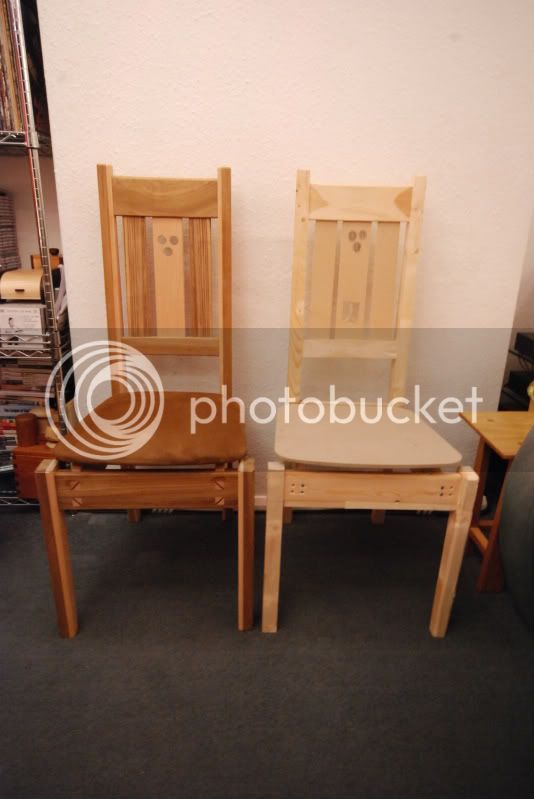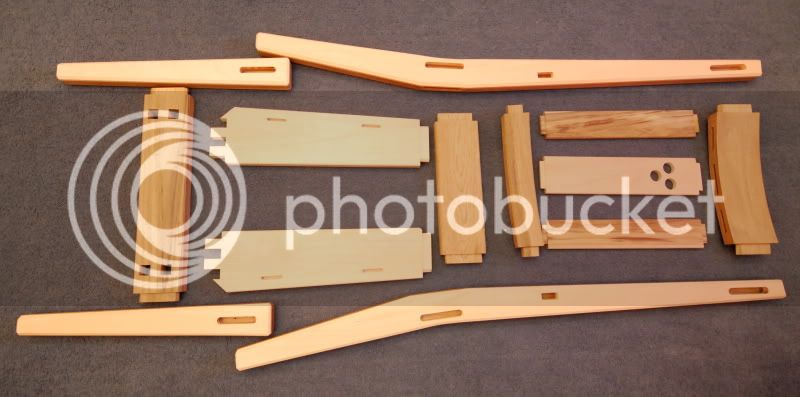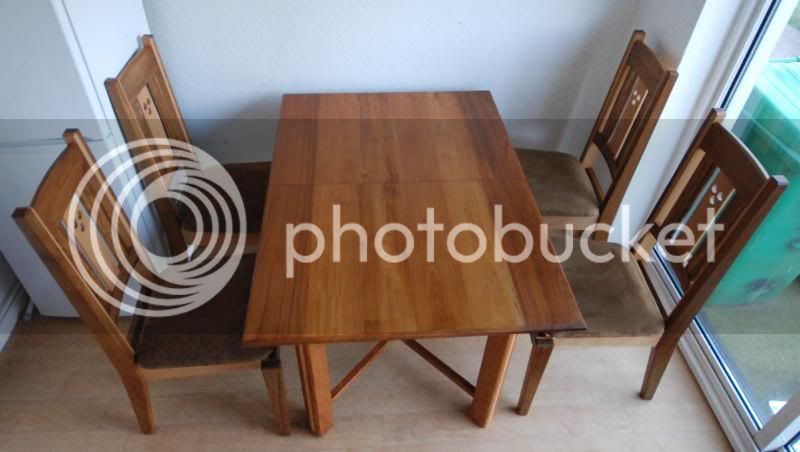woodbrains
Established Member
Paddy Roxburgh":279icgn4 said:Are these the chairs from the Alan Peters book?
http://www.craftscouncil.org.uk/article ... an-peters/
Hello,
Yes, that is the one, though the seat pad on that is horrible. They have nice, backside contoured seats, that are very comfy and don't actually need a pad, though if you wanted to, a thin floppy cushion is all that is needed.
What do you think, is it your/his taste?
Oh, it doesn't really show on that photo, but the back slats are bent under tension to give lumbar support. Peter's did a fantastic design actually, light, strong and comfy dining chairs that are easy enough to batch produce.... Genius.
Mike.



































